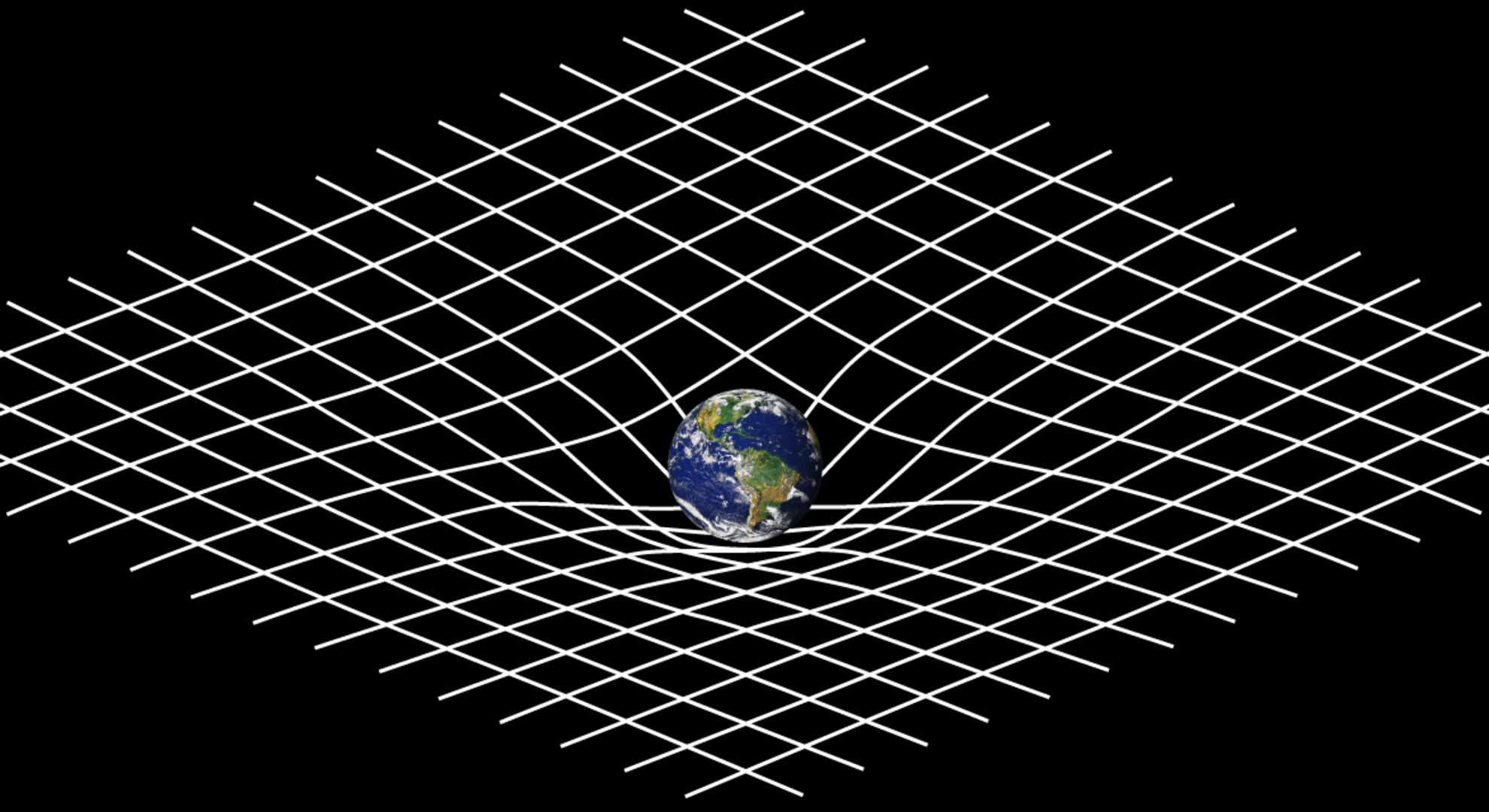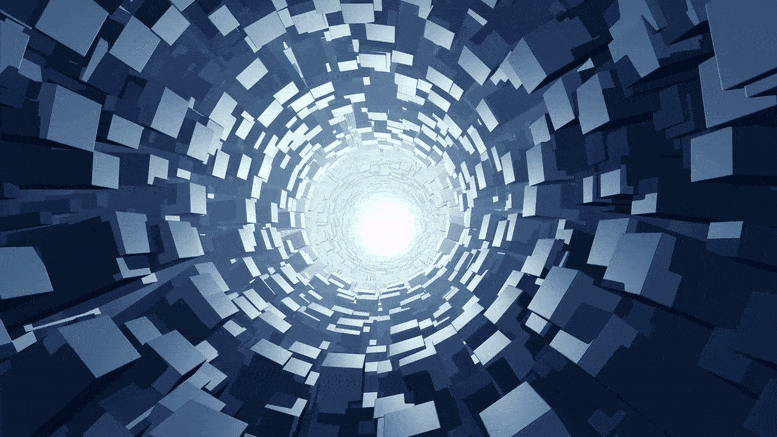 A visualization of how the earth creates a warp in spacetime, in line with general relativity theory. But where does the quantum realm fit in? (Image credit: NASA)A new discovery suggests gravitational fields can enable matter to become quantum entangled — and that's even if the concept of quantum gravity does not exist. The idea comes from two London-based physicists who are challenging the way we think about quantum fields and how classical gravity operates.The search for quantum gravity is the next big step in physics, as researchers seek to unify the physics of the very small with that of the very large. Quantum mechanics explains the former while general relativity theory — which famously describes how gravity works — explains the latter. Both quantum physics and the theory of general relativity were products of the first quarter of the 20th century, but 100 years later, scientists are still none the wiser as to how the two can be unified. As it stands, the theories contradict one another.
A visualization of how the earth creates a warp in spacetime, in line with general relativity theory. But where does the quantum realm fit in? (Image credit: NASA)A new discovery suggests gravitational fields can enable matter to become quantum entangled — and that's even if the concept of quantum gravity does not exist. The idea comes from two London-based physicists who are challenging the way we think about quantum fields and how classical gravity operates.The search for quantum gravity is the next big step in physics, as researchers seek to unify the physics of the very small with that of the very large. Quantum mechanics explains the former while general relativity theory — which famously describes how gravity works — explains the latter. Both quantum physics and the theory of general relativity were products of the first quarter of the 20th century, but 100 years later, scientists are still none the wiser as to how the two can be unified. As it stands, the theories contradict one another.
Dr. Richard Lieu, a physics professor at The University of Alabama in Huntsville (UAH), a part of The University of Alabama System, has published a paper in the journal Classical and Quantum Gravity that proposes a universe built on steps of multiple singularities rather than the Big Bang alone to account for the expansion of the cosmos.
The new model forgoes the need for either dark matter or dark energy as explanations for the universe's acceleration and how structures like galaxies are generated.
The researcher's work builds on an earlier model hypothesizing that gravity can exist without mass.
Scientists have revealed a radical theory that seeks to reconcile two pillars of modern physics – quantum mechanics and Einstein’s theory of general relativity. (CREDIT: Isaac Young)
In a cutting-edge development that has sent shockwaves through the scientific community, researchers at University College London (UCL) have unveiled a radical theory that seeks to reconcile two pillars of modern physics – quantum mechanics and Einstein's general theory of relativity.These two theories, which have been the foundation of physics for over a century, have long been at odds with each other, and their unification has remained an elusive quest.Today, we dive into the world of quantum gravity, a field of study that aims to bridge the gap between the quantum realm, which governs the behavior of particles at the smallest scales, and the macroscopic world, where gravity shapes the very fabric of spacetime.While the prevailing consensus has been that Einstein's theory of gravity must be modified to fit within the framework of quantum theory, a new theory, coined as a "postquantum theory of classical gravity," challenges this assumption in a thought-provoking way. READ MORE...
Does time exist? The answer to this question may seem obvious: Of course it does! Just look at a calendar or a clock.
But developments in physics suggest the non-existence of time is an open possibility, and one that we should take seriously.
How can that be, and what would it mean? It'll take a little while to explain, but don't worry: Even if time doesn't exist, our lives will go on as usual.
A crisis in physics
Physics is in crisis. For the past century or so, we have explained the Universe with two wildly successful physical theories: general relativity and quantum mechanics.
Quantum mechanics describes how things work in the incredibly tiny world of particles and particle interactions. General relativity describes the big picture of gravity and how objects move.
Both theories work extremely well in their own right, but the two are thought to conflict with one another. Though the exact nature of the conflict is controversial, scientists generally agree both theories need to be replaced with a new, more general theory.
Physicists want to produce a theory of "quantum gravity" that replaces general relativity and quantum mechanics, while capturing the extraordinary success of both. Such a theory would explain how gravity's big picture works at the miniature scale of particles.
Time in quantum gravity
It turns out that producing a theory of quantum gravity is extraordinarily difficult.
One attempt to overcome the conflict between the two theories is string theory. String theory replaces particles with strings vibrating in as many as 11 dimensions. READ MORE...

The search for signatures of quantum gravity forges ahead.
Sand dunes seen from afar seem smooth and unwrinkled, like silk sheets spread across the desert. But a closer inspection reveals much more. As you approach the dunes, you may notice ripples in the sand. Touch the surface and you would find individual grains. The same is true for digital images: zoom far enough into an apparently perfect portrait and you will discover the distinct pixels that make the picture.The universe itself may be similarly pixelated. Scientists such as Rana Adhikari, professor of physics at Caltech, think the space we live in may not be perfectly smooth but rather made of incredibly small discrete units. “A spacetime pixel is so small that if you were to enlarge things so that it becomes the size of a grain of sand, then atoms would be as large as galaxies,” he says.Adhikari and scientists around the world are on the hunt for this pixelation because it is a prediction of quantum gravity, one of the deepest physics mysteries of our time. Quantum gravity refers to a set of theories, including string theory, that seeks to unify the macroscopic world of gravity, governed by general relativity, with the microscopic world of quantum physics. At the core of the mystery is the question of whether gravity, and the spacetime it inhabits, can be “quantized,” or broken down into individual components, a hallmark of the quantum world.“Sometimes there is a misinterpretation in science communication that implies quantum mechanics and gravity are irreconcilable,” says Cliff Cheung, Caltech professor of theoretical physics. “But we know from experiments that we can do quantum mechanics on this planet, which has gravity, so clearly they are consistent. The problems come up when you ask subtle questions about black holes or try to merge the theories at very short distance scales.”Because of the incredibly small scales in question, some scientists have deemed finding evidence of quantum gravity in the foreseeable future to be an impossible task. Although researchers have come up with ideas for how they might find clues to its existence—around black holes; in the early universe; or even using LIGO, the National Science Foundation-funded observatories that detect gravitational waves—no one has yet turned up any hints of quantum gravity in nature. READ MORE...
 A visualization of how the earth creates a warp in spacetime, in line with general relativity theory. But where does the quantum realm fit in? (Image credit: NASA)
A visualization of how the earth creates a warp in spacetime, in line with general relativity theory. But where does the quantum realm fit in? (Image credit: NASA)

